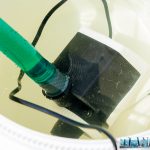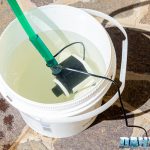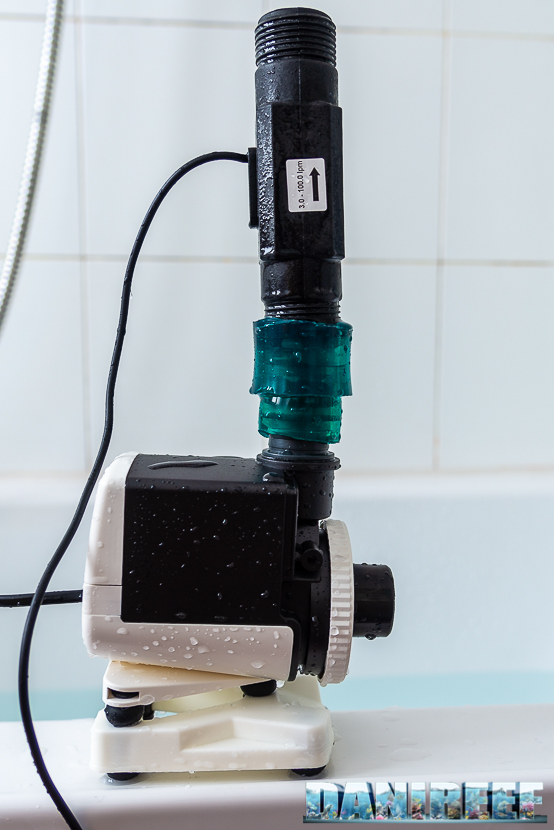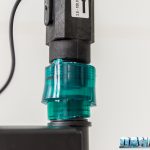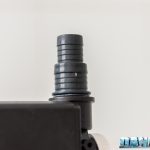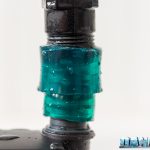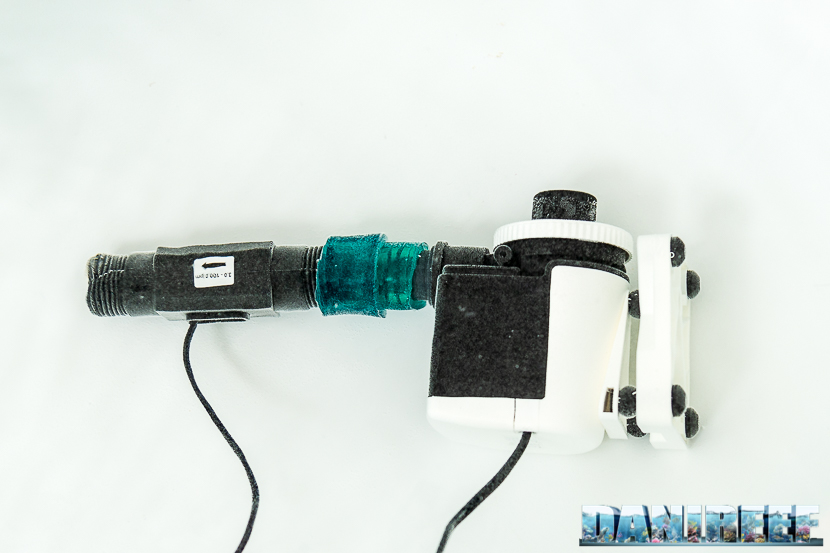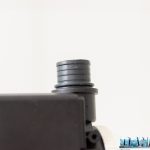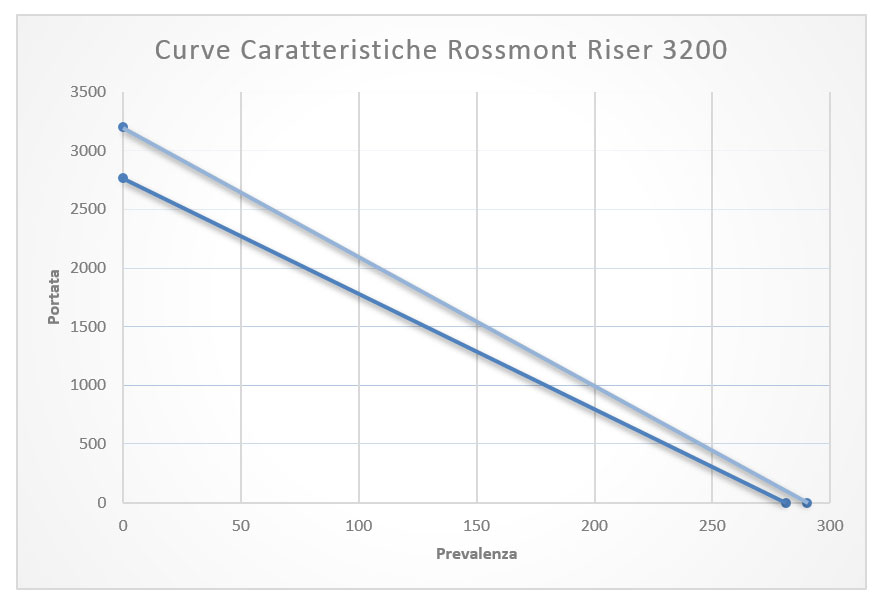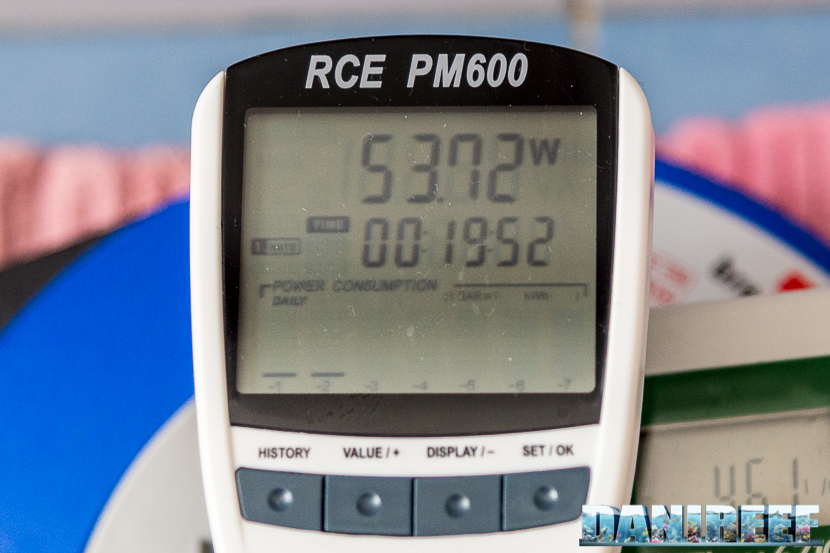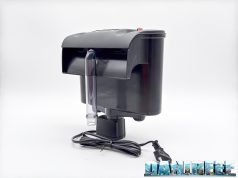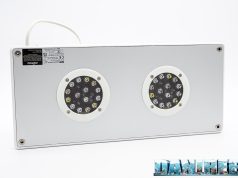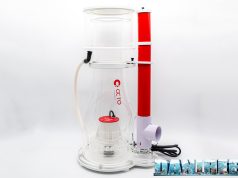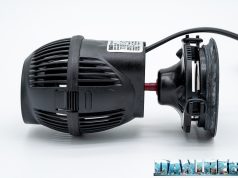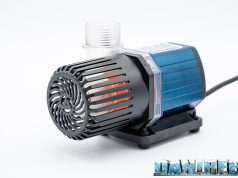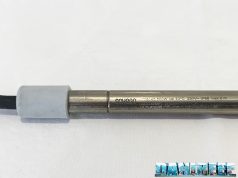Head Max Trial
The first trial we did was measuring the prevalence. As you know, the prevalence is the pump’s capacity of elevating water over a certain altitude. To do that, we measured the water level reached inside a rubber hose. We didn’t measure every single intermediary step, as we usually do, because, as we wrote on the previous page, there are no intermediary steps. But we can choose any step seamlessly.
As you can see from the previous picture, we blocked the hose to the terrace. We turned on the pump. We waited for about 10 minutes before the pump stabilized and then we performed the measurement.
Then we measured a maximum head equal to 2,81 metres against the declared 2,9 metres.
The discrepancy between the declared and measured prevalence is then equal to 3%. A remarkable result.
Flow Rate Trial
Measuring the flow rate was easy thanks to the DigiSavant DIGIFLOW 6710M flowmeter. Firstly we proceeded to link our connecting hoses to our flowmeter, as you can see from the following picture.
We tried to make it so that the flowmeter adhered flawlessly to the pump’s exit.
The measurement is expressed in litres per minute. So it’s enough to multiply the result by 60 to get the litres per hour.
Obviously we’d like to point out that the measurement applies within the conditions under which we did the measurements. The so conceived connecting hose could have induced some losses in the system.
The so conceived system delivered the following value: 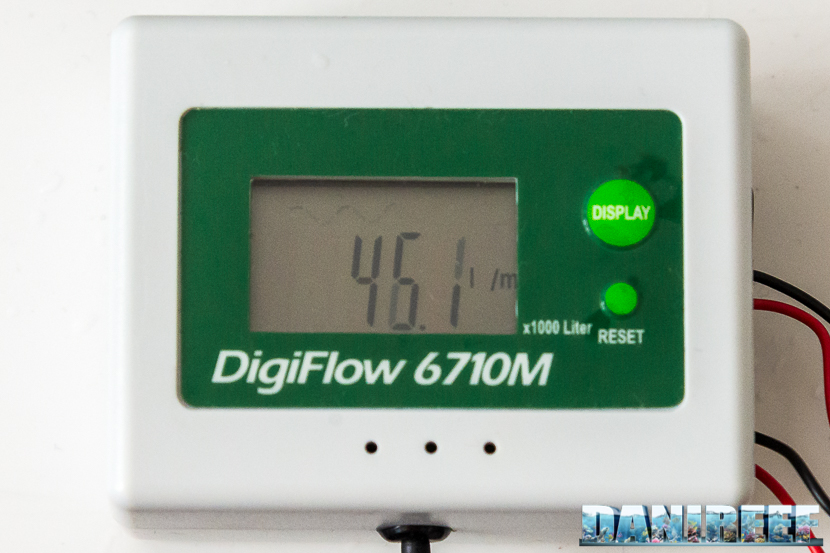
The maximum flow rate was of 2.766 l/h (or 46,1 l/m*60), slightly under the declared 3.200 l/h. The pump thus reached 86% of the declared value, within the test’s conditions. A resounding result if you consider the Ecotech Marine Vectra M1‘s 66% (article) or the Waveline DC6000‘s 67% (article).
When you have to use a return pump, pay attention to the following aspects which can lower, even drastically, the flow rate. Use the biggest hose that is supplied. Always use a sufficiently wide hose. The hose has to be as short as possible and take as little 90° grades curves as possible. Otherwise the expected flow rate will decrease even more drastically.
Characteristic Curve
The characteristic curve is that specific curve that combines the various flow rate values and head max. It’s not possible without the adequate equipment to recreate such a curve. Moreover, in this specific case it was very complicated to measure every potentiometer setting’s prevalence, since there were no established intermediate points. So we settled for combining the flow rate and prevalence two extreme points. Both the ones we measured and the ones from the project.
You can then see how the difference between the declared value, the highest curve, and the measure value is basically insignificant.
In theory, if you put in the prevalence you need, for example 200 cm, you should draw a line at a 200 prevalence value, and where the line crosses the characteristic line, go read the corresponding prevalence value. With the Rossmont Riser 3200 at the corresponding 200 cm of prevalence, you should have a flow rate estimated at approximately 800 l/h against the declared 1.000. Inside the aquarium the situation will be even worse because you will have added the hose friction and the curves you have to consider.
To calculate the estimated flow rate in your own aquarium, we’ll send you to this useful article with an included calculator: the automatic flow rate calculation.
Energy Consumption Trial
Collecting the instant consumption was made possible thanks to the utilization of the convenient instrument RCE PM600 which is able to measure even the Cos(fi) (o discrepancy). The result is immediately provided in watts.
The maximum declared consumption of the Riser is equal to 53,72 watts. According to our measurements it’s about 3% over the declared value. Even in this case it’s a totally insignificant difference.
If you consider a consumption equal to 53,72 watts, and an energy cost equal to 0,27 euros per kwh, we could use this pump continuously for a whole year, at maximum power, with a consumption equal to 470 kwh, at a cost of 127 euros per year, or 10,6 euros per month.
Given the pump’s dimensions and above all its flow rate value, it wasn’t possible to conduct our usual trial for noise. We can however confirm that the pump is very quiet. Also because we are using it on a permanent basis on our aquarium and we would have noticed the difference.






